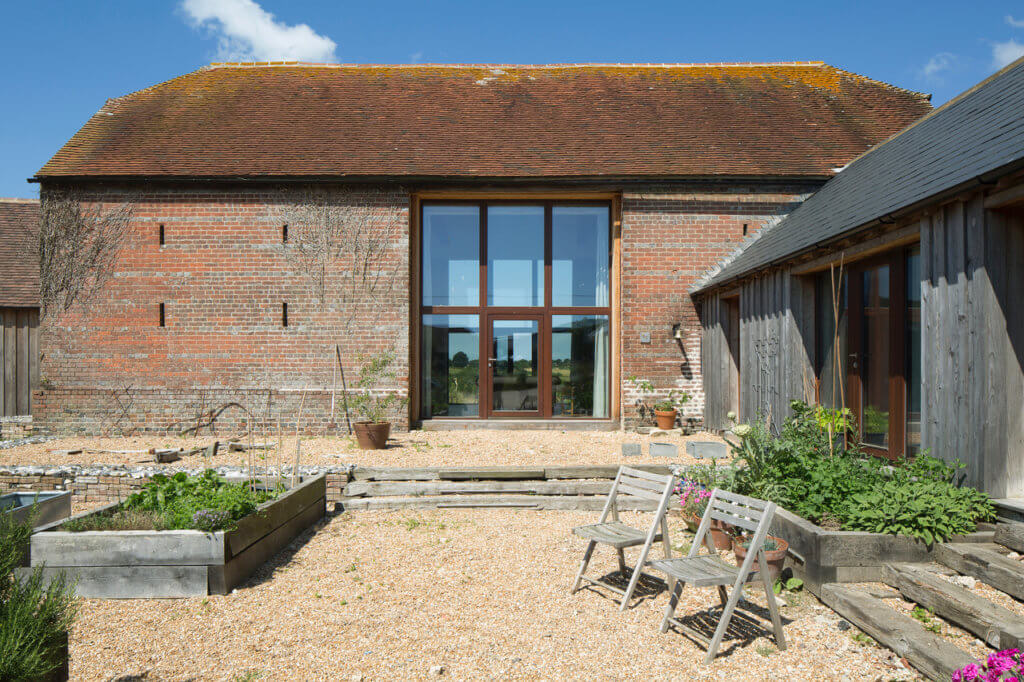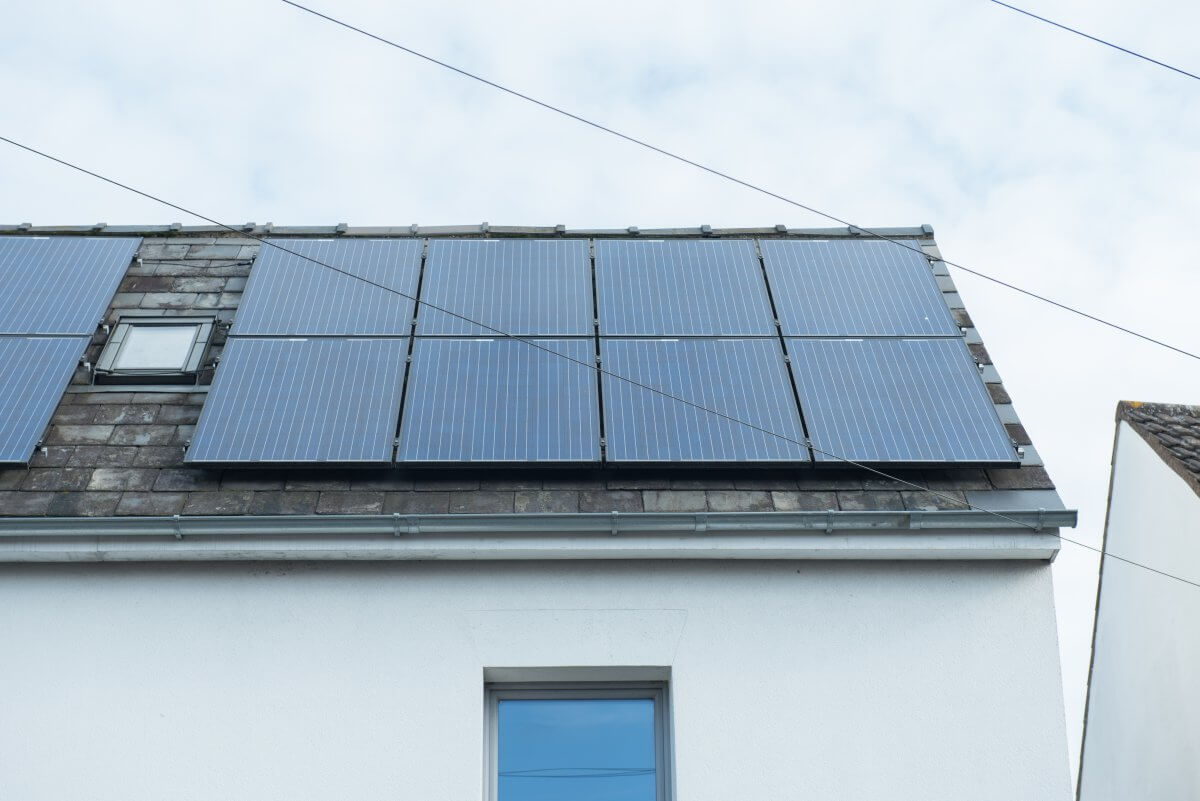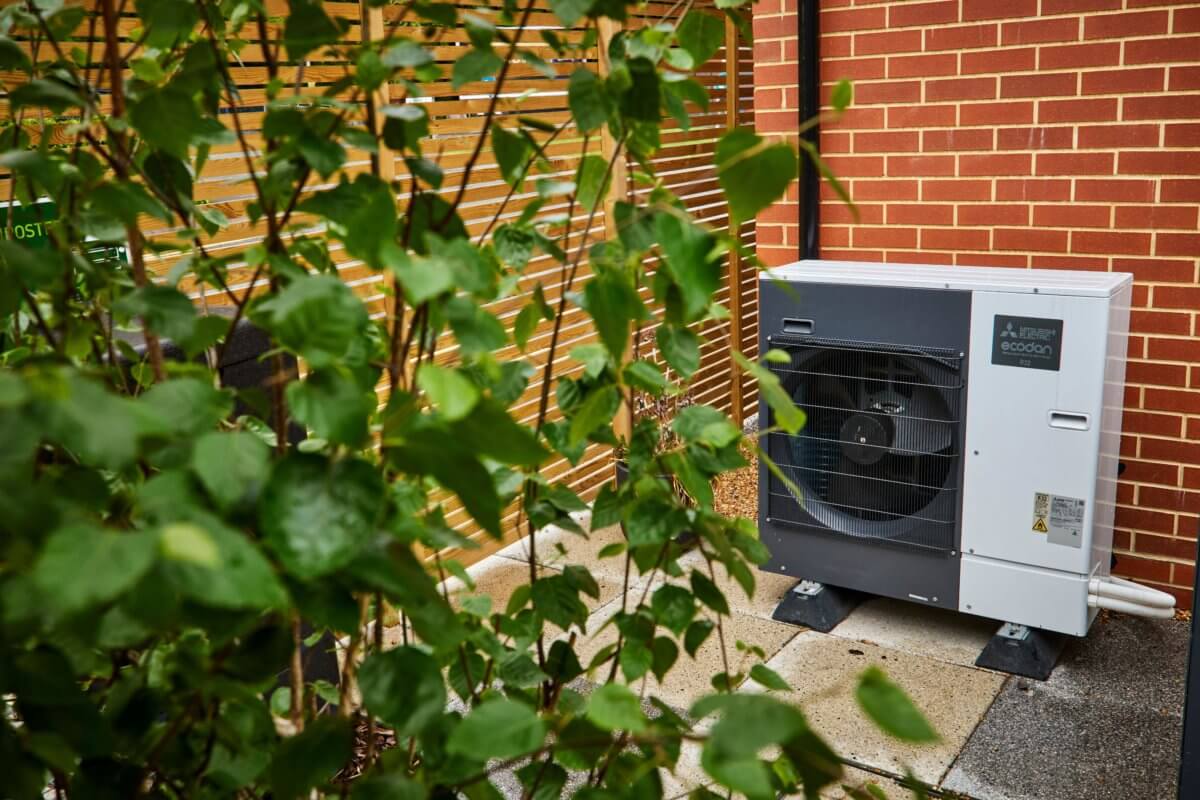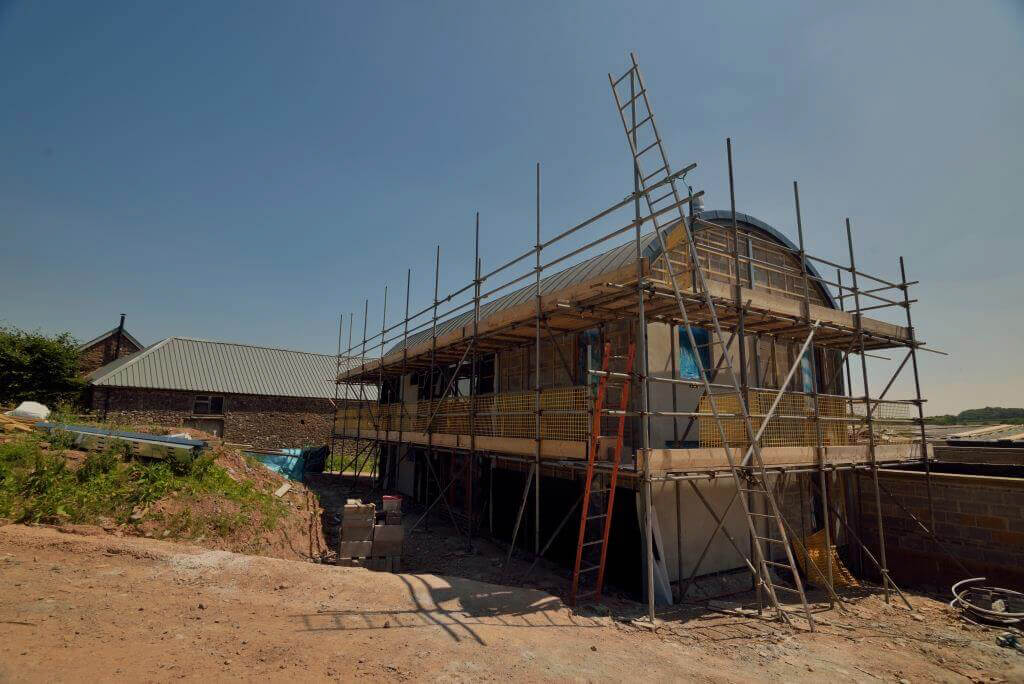Rethinking Insulation for your Eco Renovation

A cost-of-living crisis, unprecedented hikes in fuel bills and a continuing urgency to tackle climate change all adds up to a radical re-think of how we should improve our homes’ energy efficiency while working towards net zero.
Making your home more energy efficient through better insulation (e.g. loft and wall insulation) and draught-proofing (double or triple glazing) will help to reduce energy bills and carbon emissions. However, there is much more you can do to work towards net zero by using natural, organic and more sustainable insulation materials.
This article is part of an on-going series to offer advice and help with your eco renovation or retrofit project. You can also download our free Guide to Eco Renovation. Today we will focus on the environmental impact of using mineral and oil-based insulation materials. We will also consider how natural and sustainable insulation materials such as those derived from wood fibre, hemp, straw, wool, cellulose, cotton and flax that will not only improve your home environment but also reduce your carbon footprint.
Why Insulate Your Home?
In the UK the heating sector accounts for nearly a third of the UK’s annual carbon footprint; and, according to the UK Government, in 2019 17% of heating emissions from buildings came from homes. Improving your home’s insulation will, therefore:
-
-
- Help lower your fuel bills
- Help improve your home’s energy performance certificate (EPC) rating. This could also improve your renovation mortgage rate – learn more about our C-Change Discounts.
- Reduce your home’s carbon footprint
- Contribute to a healthier and cosier home environment
-
Where does your home lose heat?
Around 35% of your home’s heat is lost through poor wall-insulation and inadequate loft insulation can account up to 25% of heat loss and may also contribute to problems with damp. Doors and windows can typically lose 10-15% for your home’s heat and uninsulated floors can also add up to 15%. To ensure greater energy efficiency, good quality and, preferably carbon-neutral or organic, home insulation should therefore be at the very heart of any renovation or retrofit project (see our discussion of ‘fabric first’ in our early blog).
Making Your Home More Energy Efficient
There are several relatively simple ways of improving your home’s energy efficiency through insulation, including:
-
-
- Draught-proofing
- Thermal underlay beneath floors and carpets
- Roof and loft insulation
- Cavity wall insulation
- Solid wall insulation
- Insulating pipes, water tanks and radiators
- Secondary or triple glazed windows and doors
-
However, before you shoot off to your local DIY store, please consider the environmental impact of the material used in insulation. This might include:
-
-
- The nature of the material itself (i.e. what it’s made of: is it natural, sustainable? etc)
- How energy-efficient is the material used?
- What is the carbon footprint in its manufacture and distribution (also known as ‘embodied energy’)?
-
What is ‘Embodied Energy’?
Embodied energy is the sum of all the energy required to produce a material or product. This would include the extraction of raw materials (e.g. mining, quarrying), manufacture and transportation. For instance, a 2014 study concerning the environmental impact of rockwool insulation material noted:
The main pollutant in the rockwool supply chain is the utilization of electrical energy during the manufacturing processes, which is responsible for 64% of the total carbon footprint, while transportation of the raw materials and final products contributes by 12% to the total greenhouse gas emissions.
Aivazidou, Eirini & Toka, Agorasti & Iakovou, Eleftherios & Vlachos, Dimitrios. (2014). ‘Assessing the Carbon Footprint of the Rockwool Supply Chain: A Real-world Case Study’
An important aspect of embodied energy, in terms of net zero, is the carbon released by using fossil fuels in the manufacturing and supply chain process. Although it is difficult to assess any individual product’s use of fossil fuels versus renewables, in general we may regard a higher embodied energy as having a more negative impact on the environment. As we shall see, mineral and oil-based insulation materials tend to have a higher embodied energy than organic-based materials.
Types of Common Home Insulation:
Rock Wool
One of the most commonly used materials for home insulation is rock wool. As the name suggest, it is made from a mixture of molten rock, such as basalt, & recycled steel slag. This is melted at very high temperatures (around 1600oC) and spun into wool packages using oils and resins to bind it and make it waterproof. Its embodied energy is relatively high and can also produce harmful emissions such as carbon monoxide, phenol and formaldehyde. Quarrying of the raw materials can also lead to land degradation. Rock wool can include between 16%-40% recycled material and it is possible to recycle but has very poor biodegradability so there are issues in terms of its end-of-life environmental impact as it is not suitable for landfill. Dust particles may be hazardous and it is essential that a mask is worn during installation.
Glass Wool
Glass wool insulation fibres are produced in a similar way to rock wool but uses sand, recycled glass, limestone and soda ash as its base constituents. Its embodied energy is also high, posing issues regarding its overall carbon footprint. On the plus side glass wool generally includes between 30-60% recycled glass and is possibly recyclable or re-usable in certain conditions. However, quarrying the raw material has its own environmental impact, and glass wool can also include toxic metals such as boron to improve moisture tolerance.
Foamed Glass
Foamed glass insulation is made from a mixture of crushed glass and carbon and heated to extreme temperatures. It is particularly useful for flat roofing. As with glass wool it uses up to 60% recycled glass waste but suffers from the same manufacturing issues as rock and glass wool in terms of emissions. Its bitumen content also makes it problematic for safe disposal.
Oil-Based Insulation Materials
Oil-based insulation includes expanded polystyrene (EPS), extruded polystyrene (XPS) and rigid polyurethane (PUR/PIR). All are derived from the petrochemical industry with its potential pollution risks, resource depletion, noxious gas emissions and relatively high embodied energy. The fire retardant used in this kind of insulation is regarded as a hazardous material. It is possible to recycle and reuse many of these oil-based material, but it is not sustainable and, as with all plastics, highly problematic to dispose of at end-of-life use.
Phenolic foam insulation is another popular insulation material used in floors, walls, and roofing. It suffers from the same environmental issues as other oil-based materials with the added twist that it is produced from the toxic petrochemical derivative phenol formaldehyde.
Natural Fibre and Organic Insulation
Cellulose Insulation
Suitable for using between rafters and joists, cellulose insulation is made from up to 90% recycled newspaper. Recyclable and reusable, its embodied energy is also relatively low compared to mineral insulation production. However, we should be mindful that newsprint production can produce hazardous waste. This material also contains boron and biocide and there are possible risks associated with paper dust inhalation, so a mask is required during installation.
Cork Insulation
Often used for flat roofs, cork insulation is made from bark which is grated and expanded into blocks. Reusable and recyclable, if managed properly, cork is manufactured from renewable resources that supports indigenous wildlife and helps sustain rural communities. Tree growth also sequesters CO2. Again, as with cellulose, there are possible risks through dust inhalation so always wear a mask.
Wood Fibre Insulation
Wood fibre insulation is made from forestry thinning and sawmill waste and can be used as rigid insulation for roofs, ceilings and floors. Manufactured from renewable resources and using a large amount of waste material, wood fibre is reusable, recyclable and compostable. However, it does contain a petrochemical binder which is non-renewable and ammonium phosphate as a fire retardant. Currently in the UK a lot of wood fibre is imported, so this can significantly add to its overall embodied energy.
Hemp Insulation
Hemp or a hemp mixed with recycled cotton or wood fibres is used for insulating pitched roofs, ceilings and floors. Hemp is recyclable, reusable and compostable. As with wood-based insulation hemp sequesters CO2 during growth. Most hemp insulation will include a non-renewable polyester binder, most of which is recycled but, along with the fact that most hemp is imported, all this does add to its embodied energy. As with other natural insulation material, hemp contains boron and a fire retardant such as ammonium phosphate.
Flax Insulation
Similar to hemp in its uses, flax insulation is made from flax plus a polyester binder and fire retardant. A by-product of the linen industry, flax is a sustainable material, renewable, recyclable, reusable and compostable. It is space efficient and long-lasting with an estimated service life of 75 years. At the current time, most flax insulation is sourced from countries such as the Netherlands and which all adds to its embodied energy.
Sheep’s Wool Insulation
Sheep’s wool insulation is made from wool with a polyester binder and fire retardant and can be used to insulate between rafters, joists and timber studs, walls and floors. Wool comes from a renewable resource and is reusable and safe to dispose after use. Wool also has properties that moderate temperatures throughout the year, warming in winter, cooling in summer. It is breathable and has excellent acoustic properties. The downsides are the added materials: polyester, fire retardant and biocides. Cheap imported wool adds to embodied energy as well as potentially raising issues of animal welfare and use of pesticides. There should, of course, be no reason to import wool as here in the UK sheep are plentiful and there are UK manufacturers who only use locally sourced wool. One caveat, however: it is estimated that 37% of the UK methane output comes from sheep and cattle.
Secondary Glazing and Triple Glazed Windows and Doors
As we have seen, around 20-25% of heat lost in many houses is through poorly glazed windows and doors. If you are retrofitting a Victorian terrace, replacing existing double glazing can be expensive and fitting secondary glazing may be both the most energy efficient and cost effective option.
For an eco-renovation, a low carbon, energy efficient home will combine good quality insulation and draught proofing with thermally efficient windows and doors. High performance triple glazing will generally lose less than half the heat of typical double glazed windows and doors.
Providing Comfort, Security and Well-Being For Your Home
Triple glazing will also create a more comfortable living space in your home. The additional glass pane creates an extra layer of thermal protection, reducing heat loss and minimizing coldspots near windows. This enhanced insulation not only helps maintain a consistent indoor temperature but also leads to significant energy savings by reducing the need for heating during colder months. Furthermore, triple glazing is highly effective in sound insulation, providing a quieter and more peaceful environment.
Triple glazing can also enhance home security. The multiple layers of glass make it more challenging for potential intruders to break through, adding an extra layer of protection to your property.
Embodied Energy and Triple Glazing
Although highly thermally efficient and more likely to reduce your home’s carbon emissions, triple glazed windows and doors aren’t necessarily the lowest carbon option. Triple glazing includes an additional layer of glass and a second pocket of gas between the glazing panes and this increases the embodied energy of manufacture. Other factors to consider include: the type of frame you use; and the ratio of frame to glass area. Aluminium frames have the highest embodied energy and PVCu next. As you’d expect, wooden frames are the lowest embodied energy option.
Home Insulation: Where Possible – Go Natural
Although good quality home insulation and draughtproofing is a must for any ‘fabric first’ renovation or retrofit, there are pros and cons for all the insulation materials you might use.
As we can see in the above table, natural fibre insulation tends to use less embodied energy in the manufacturing process. It is generally more reusable, recyclable and sustainable. Energy efficiency performance is on a par with mineral and non-organic insulation materials if not better. In fact, 1kg of natural fibre stores 1.8kg CO2 and sheep’s wool has a similar acoustic performance as rock wool but at 70% density.
Natural insulating materials also generally tend to be more breathable and deal with humidity and moisture in a way that maintains better air quality, producing a healthier and more comfortable home environment.
We at Ecology have long advocated a national retrofit strategy; and this would including low-carbon home improvements such as fitting sustainable natural and organic insulation. One of the problems at the moment regarding carbon production, however, is where such organic insulating material is imported from overseas. If we are to hit net zero, we feel this can be addressed by promoting and developing local sustainable crops where possible and improving supply chain energy efficiency.
Find out more about our renovation mortgages or our C-Change discounts.






